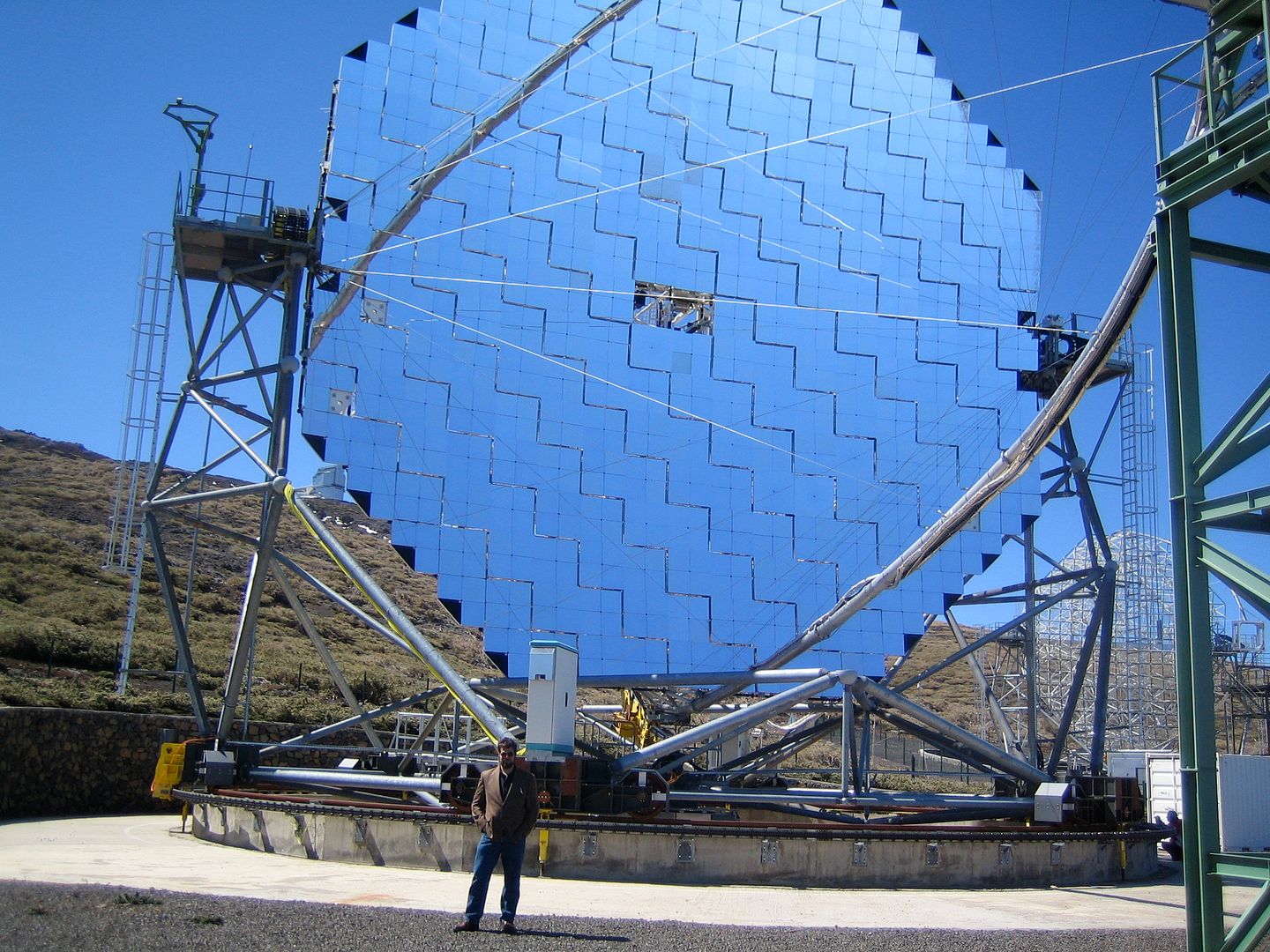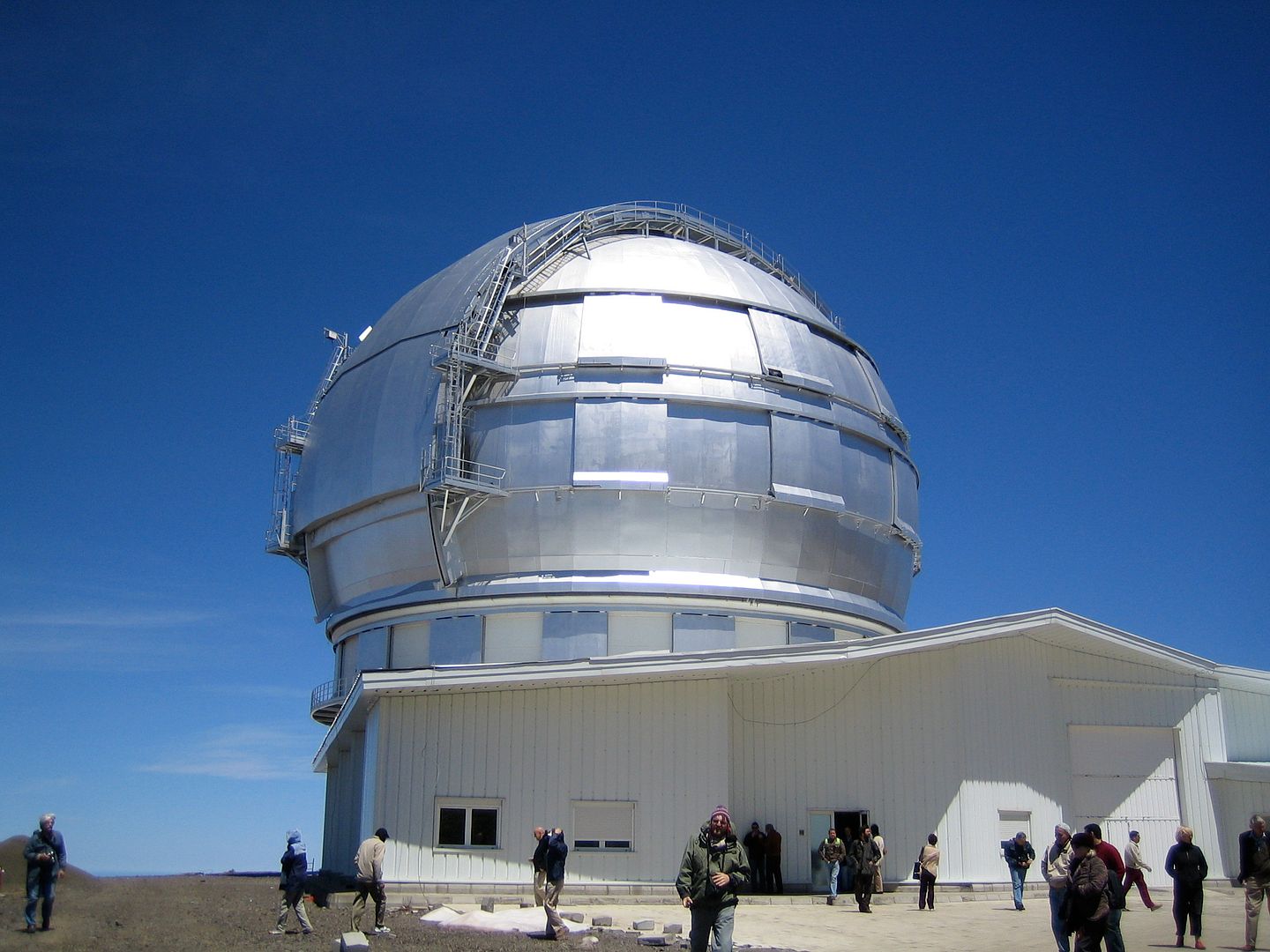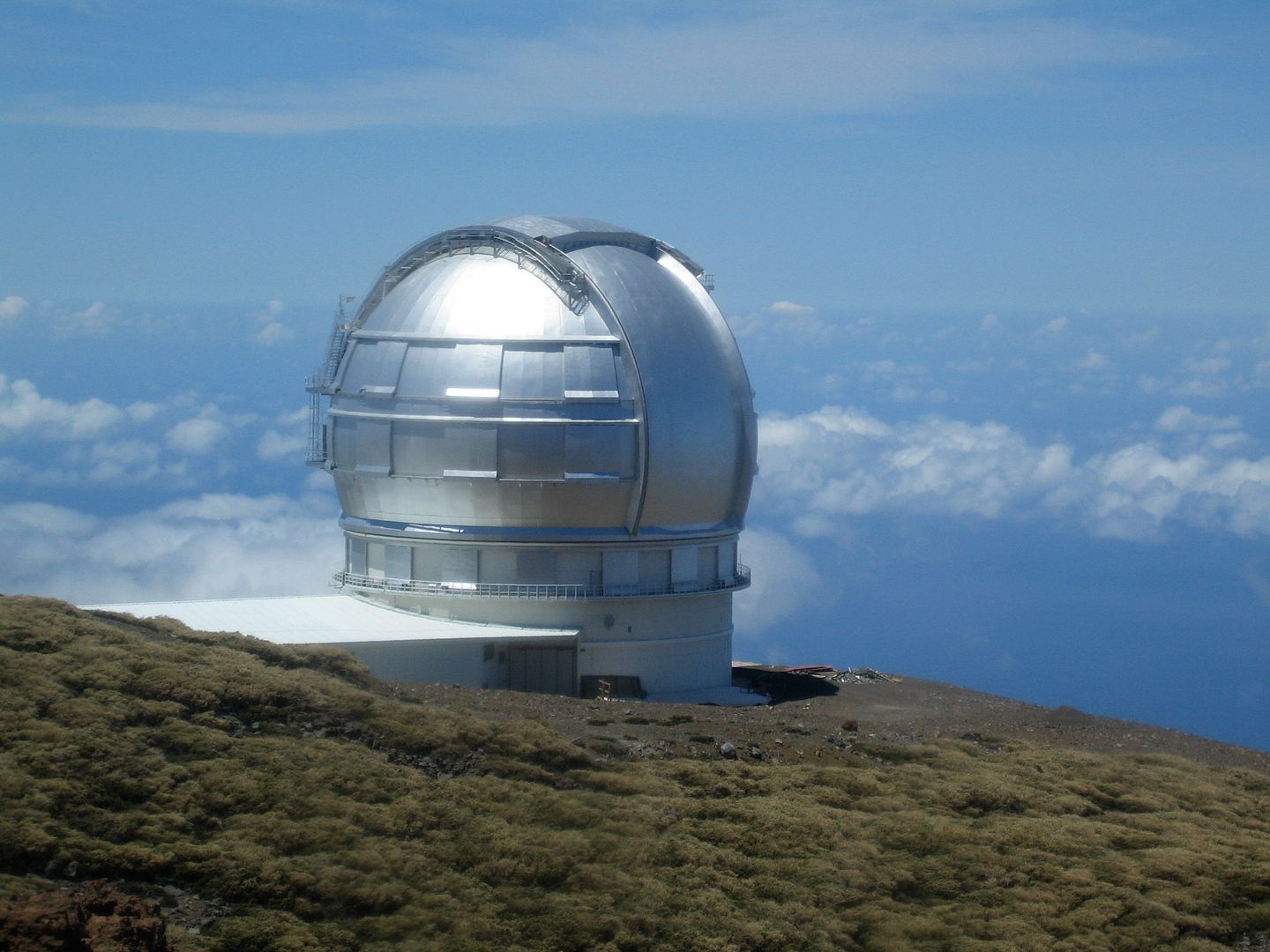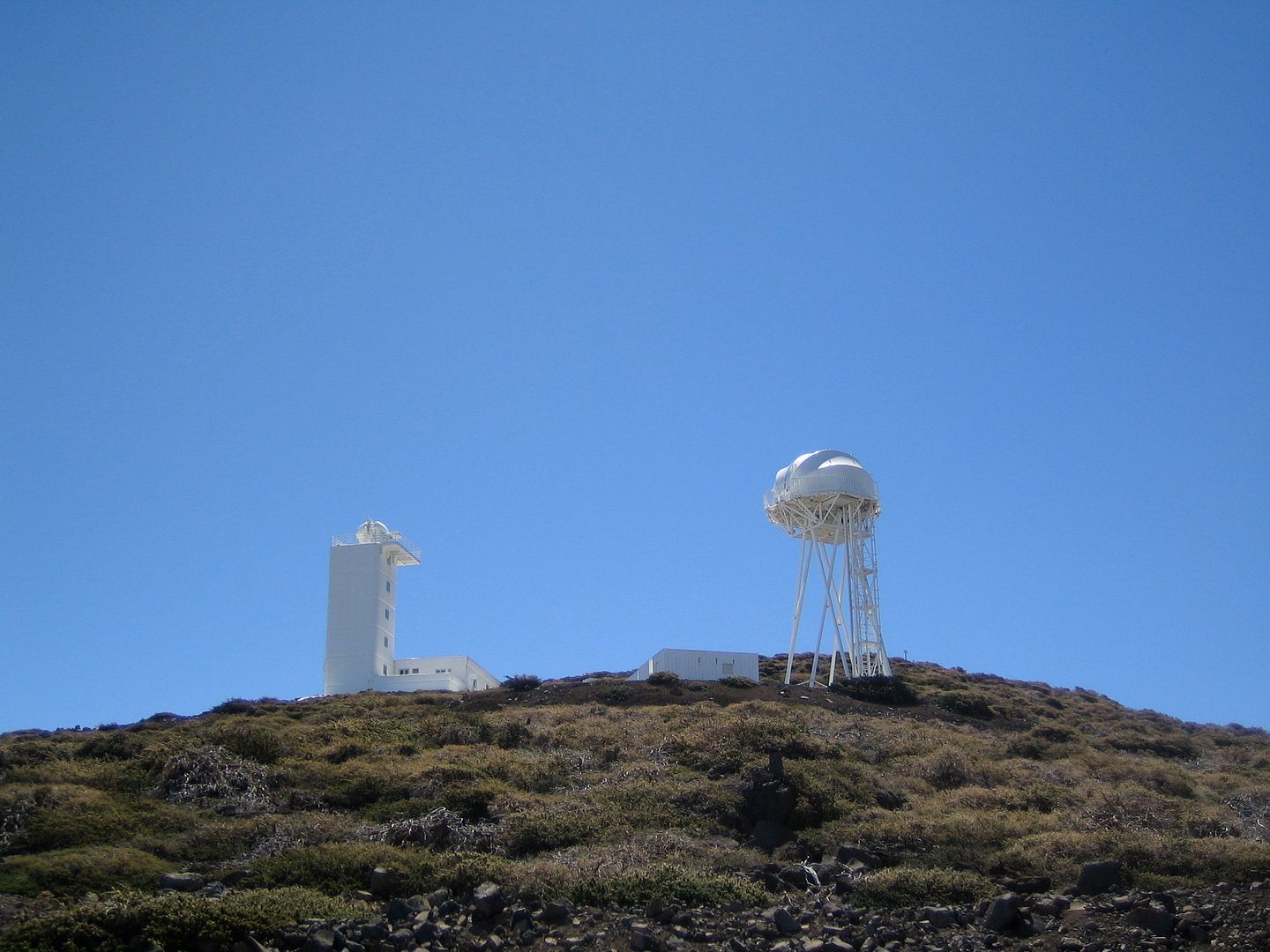 |
| That's me, at right. |
The view from the summit, located 2426 meters above sea level, was one of the most spectacular places I've ever visited. The observatory is located a bit lower in elevation and contains an impressive array of world-class telescopes.
 |
| Here I am with the MAGIC Telescope. |
As you can see, MAGIC has no dome. It is out there in the elements, something that takes some getting used to.
During my visit, there was a smaller array next to MAGIC, I believe that it was built to test the concept and is now gone. A second, full-sized, MAGIC telescope was added to the site in 2010.
Our next stop was the 4.2-meter William Herschel Telescope.
Our guides put the telescope through the paces and even gave us a look at its primary mirror:
The telescope is used for studies conducted in visible and near-infrared light.
Looking up from the site of the William Herschel Telescope it was possible to see some other installations at the observatory.
On the left is the 1-meter Swedish Solar Telescope and on the right is the Dutch Open Telescope. Unfortunately, I didn't get a close look at either one.
Another telescope that I only saw from the outside was the 3.6 meter Telescopio Nazionale Galileo.
Thankfully, I did get a wonderfully close look at the 10.4 meter Gran Telescopio CANARIAS.
 |
| The silver dome of the GTC |
Here you can see several of the thin primary mirror segments and the active optics actuators (white cylinders above the white boxes) that help to keep the segments all pointed and aligned correctly.
This is an even closer look from the side at the mirror segments (at top) and some of the actuators.
Here's the view looking up at the telescope's secondary mirror.
 |
| Looking down on the dome of the GTC, clouds and the Atlantic Ocean. |
It is always nice to tour an astronomical observatory. The Observatorio del Roque de los Muchachos is one of the world's most impressive collection of astronomical telescopes and I am very glad I had the chance to make the visit.













So cool, Scott. Thanks for posting!
ReplyDeleteHmmm well, I'm not unknown... I'm Tim Stone.
ReplyDeleteThat's really awesome. Cool!
ReplyDelete